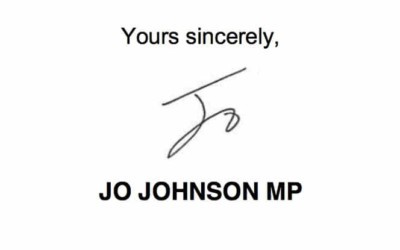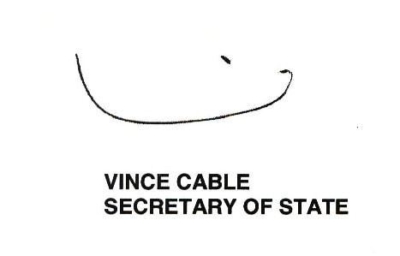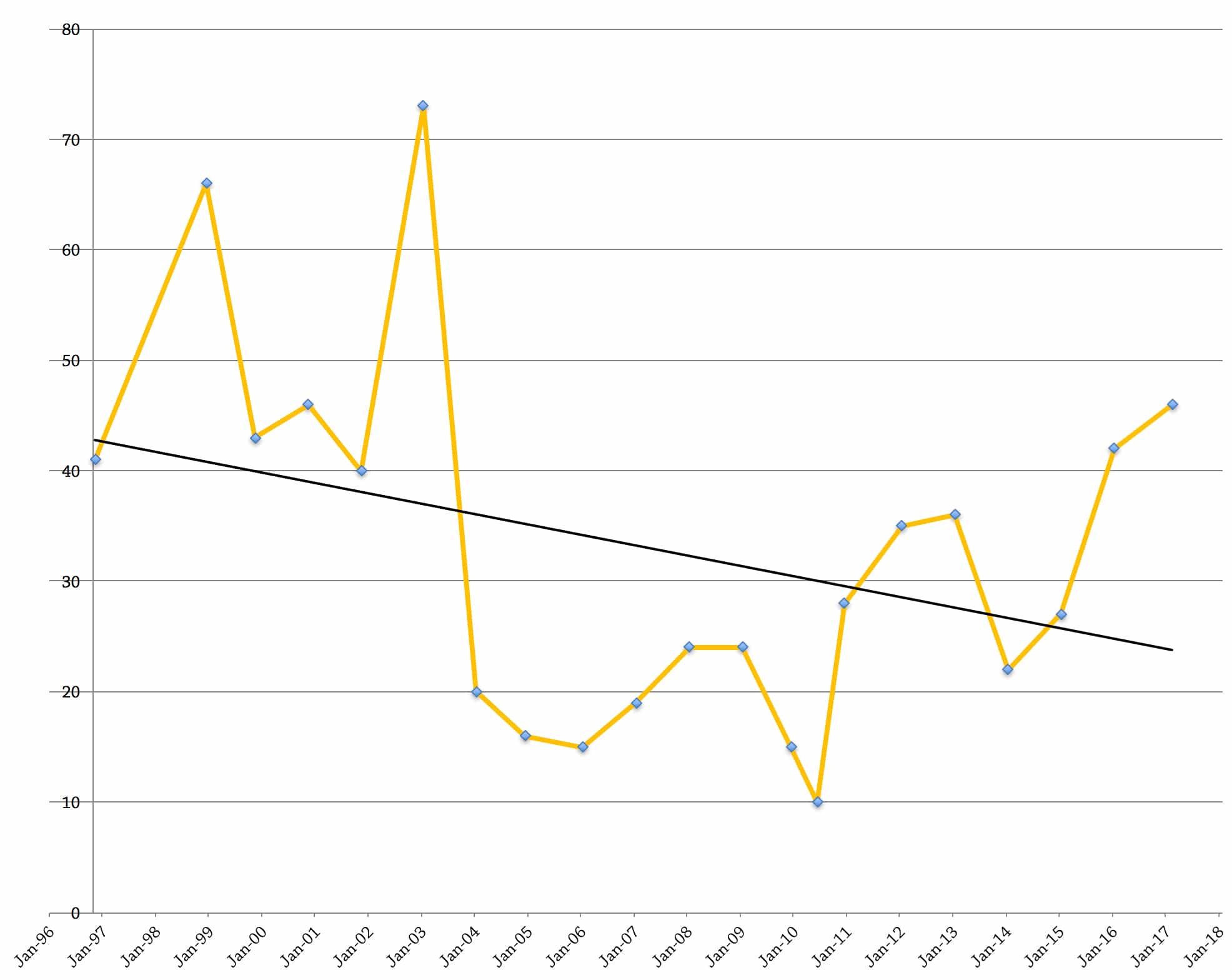And none will hear the postman’s knock
Without a quickening of the heart.
For who can bear to feel himself forgotten?
– W.H. Auden
This might be the last one folks. Or possibly the penultimate one. It’s soon going to be a different addressee and different rules as we move from HEFCE to the new Office for Students (subject to Parliamentary approval). Vice chancellors, Finance directors, planners and wonks have been fretting anxiously for weeks awaiting the details of what exciting news the letter would contain. We’ve all been on nervously waiting for the big missive. And now it’s here! And it has just one signature on it, that of Jo Johnson, the Minister whose handiwork you can find here in the amazing annual grant letter to HEFCE.
Hemingway once said, writing letters is “a swell way to keep from working and yet feel you’ve done something” but this doesn’t apply here even though, unlike most letters, the recipients at HEFCE are actually already pretty well aware of its contents having been exchanging drafts with the DfE and BEIS for quite a while beforehand. So, perhaps unusually, the letter is actually intended for a load of other people rather than the addressee. And it is a letter, not just an email, which is nice.
What does the letter actually say then? Perhaps unsurprisingly if covers the big current issues including HERB and identifies teaching quality as the top priority with TEF, learning gain and transition with OfS and QAA to the new QA model as key aspects. In addition, there is a focus on tackling essay mills, investments in coding and degree apprenticeships, the allocation of more medical students and a big chunk on aspects of social mobility.
It’s as you were with science and research funding approaches and in terms of business engagement
the Government intends to make Britain the global go-to nation for scientists, innovators and technology investors.
Regarding Brexit, there is the assertion that
we will of course seek to secure the best possible deal for HE providers and students so that we can continue to collaborate productively across Europe and beyond particularly on major science, research and technology initiatives.
All pretty straightforward there I reckon.
Safeguarding students is an important focus and there are references to the UUK taskforce on sexual harassment and its work on mental health. The Minister is asking HEFCE to
draw up plans to support the HE sector to implement the Universities UK Harassment Task Force’s report ‘Changing the Culture’ recommendations, and ensure these recommendations are being followed and implemented in the HE Sector.
In addition
we would like the Council to draw up plans to support the higher education sector implement the Universities UK ‘Wellbeing in Education’ programme.
This is all rather surprising in that this is sector-generated work to which universities have contributed and many have already begun to act upon. It seems odd that the Minister would ask the Funding Council to “support” the sector in implementing our own recommendations. Prevent, efficiency and the need to ensure an effective transition to the OfS and UKRI are also noted as Mr Johnson rounds off the missive.
So, it may be the end of days, but there is still plenty of work to do for HEFCE and the sector.
The signature in this first solo Jo Johnson grant letter is cheerily just his first name:

I think everyone still misses Vince Cable’s smiley though :

A letter is an unannounced visit, the postman the agent of rude surprises. One ought to reserve an hour a week for receiving letters and afterwards take a bath.
– Friedrich Nietzsche
Having taken the hour to receive it and had that necessary bath we need to turn away from that tedious detail about content and ask about the key issues like how long was it this time? Does it beat the recent high water mark of 2016 which was the longest since 2003? Will it be the last?
This year, at 46 paragraphs it’s significantly longer than typical examples of this kind of letter which is currently running at an average of just under 32 paragraphs. Indeed it equals the third longest of all time. The trend is still downwards but the upturn of the last few years gives grounds for optimism for a bumper final year. The missive itself is 7 pages long but includes a bonus 8 pages of appendices. So let’s have a look at the trend:

Yet more letters of note
As some will be all too well aware, I tend to rehash this every year. Rather than force everyone back to previous posts I have, yet again, simply updated the previous summary of the key issues here. You’ll find this especially handy if you are new to this niche area. Or pointless if you are already in this wonk-niche.
Those with longer memories will have fond recollections of the briefest of grant letters from the University Grants Committee (UGC) which simply set out the amount of money available for disbursement. Many will long for the golden age of five year funding settlements under the UGC. Whilst it could reasonably be argued that the UGC served as an effective buffer between the state and the universities, the options for the Higher Education Funding Councils, and in particular HEFCE, are much more limited as the directives from government on spending have become ever more detailed and prescriptive. Fortunately though we are able to examine all of the details of these as HEFCE has a nice collection of funding letters going back to 1996.
This decidedly dubious summary of these letters draws on this collection but refers only to English funding allocations. I’m sure the other funding councils receive similar missives from their respective governments but it is beyond my capacity to deal with them I’m afraid.
There is a significant archive question coming up on us fast though as this may well be the penultimate or even conceivably the final grant letter from HEFCE. As the Office for Students is established it will be all change in the Government letter-writing department. Whilst we contemplate the nostalgia opportunities that returning to these missives will offer in future let us review some of the evidence…
The length of funding letters has seen two peaks in the last 14 years: January 2003’s letter was 73 paragraphs long and the December 1998 note ran to 66 paragraphs. The November 1999, November 2000 and December 2001 letters ranged from 40 to 46 paragraphs but the January 2004 letter and subsequent missives tend towards the more traditional brevity of only 15-25 paragraphs of instruction to HEFCE. A decline which matched the general trend of public funding for higher education perhaps until that is we got to 2016 when we shot back up to 42 paragraphs.
Just for completeness then here are some of the details about English Higher Education’s most exciting epistles:
- The first letter in this series is the last prepared under the previous Conservative government, way back in November 1996. This 41 paragraph note (signed by a Civil Servant) covers: linking funding to assessment of teaching quality, expanding part-time provision, the importance of closer links with employers, not wanting to see longer courses, a planned reduction in student numbers by 2,000 for the following year and keeping the participation rate at around 30%. Some interesting parallels here with the most recent letter from the current government perhaps?
- The December 1998 letter is the first New Labour funding letter. At 66 paragraphs it is one of the longest in recent times and the last one to carry the name of a senior Civil Servant rather than the Secretary of State. Topics covered include sector spending, lifelong learning, increasing participation, maintaining quality and standards (a recurring theme down the years), widening access, promoting employability, research investment, capital spend, tuition fee arrangements and Year 2000 issues (we were all worried then).
- The November 1999 letter, 43 paragraphs long, provides David Blunkett with the opportunity to wax lyrical on the importance of maintaining quality and standards, increasing participation and employability, widening access, equal opportunities for HE staff, dealing with student complaints, new capital funding, pfi/ppp opportunities, research funding and HE pay.
- David Blunkett, in his November 2000 letter, which runs to a sprightly 46 paragraphs, makes some big points on widening participation as a key priority, business links and the e-university.
In November 2001 Estelle Morris provides a neat 40 paragraph letter which gives lots of direction on widening participation, maintaining quality and standards, strengthening research, the importance of links with industry and communities, as well as something on the value of the e-Universities project (remember that?) and, last but not least, social inclusion. - January 2003 represents the high water mark of recent funding letters: in 73 action packed paragraphs Charles Clarke, in his first outing as Secretary of State, is clearly keen to lead the way. The letter covers, among other things, improvement in research, expanded student numbers, foundation degrees, widening participation, improving teaching and learning and increased knowledge transfer. As if that were not enough we also have the establishment of the AHRC, the introduction of a new quality assurance regime but with reduced burdens for institutions (yeah, right), credit systems, FE partnerships, expanded student numbers and new investments in HE workforce development. A real blockbuster of a letter.
- The January 2004 message from Charles Clarke comes in at 20 paragraphs in just over 4 pages with reducing bureaucracy, building research and quality and standards and the establishment of Aimhigher as its central features.
- December 2004 brings a Christmas treat from everyone’s favourite Santa, Charles Clarke. With just 16 paragraphs and 4 pages of direction Clarke stresses the importance of maintaining the unit of funding for teaching, controlling student numbers and making efficiency gains.
- The January 2006 letter, a first and last offering from Ruth Kelly, comes in at a modest 15 paragraphs and 4 pages. No huge surprises in the text with employer-led provision, more widening participation, additional research and capital funding and a strong steer on reducing bureaucracy being the primary features. Additional points to note include equal opportunities for HE staff, efficiency gains, the new conditions which accompany the new tuition fees regime and reference to access agreements. What’s not to like here?
- January 2007’s is a punchy 19 paragraphs and merely five pages from Alan Johnson (his one and only letter). Despite the wordiness there isn’t a huge amount in here beyond employer engagement, growing foundation degrees and a lot on widening participation.
- January 2008: as with its successor letter this one is 24 paragraphs and 7 pages long (and note the online version on the HEFCE website is erroneously dated 18 Jan 2009). In this funding letter Denham indicates that his priorities are increasing student numbers, developing employer part-funded provision, and widening participation. The letter also refers to encouraging HE to develop stronger links with schools and colleges, greater investment in research, the importance of STEM, a green development fund, closer measuring of performance, and the establishment of the fund-raising match-funding scheme.
- January 2009’s letter is 7 pages and 24 paragraphs long and in it John Denham seeks to encourage HE to support the economy through recession, wider engagement with business, promote employer-led provision, innovative ways to support business, promotion of STEM subjects and widening participation and extending fair access. Additionally, there is the confirmation of the ‘university challenge’ with 20 new HE centres to be established, emphasis on the maintenance of quality and standards, plans for continuing to reduce regulation, commitment to dual support as well as the development of REF, steps to tackle climate change and bearing down on over-recruitment by institutions.
- The December 2009 letter from Lord Mandelson comes in at 15 paragraphs. This short note follows up on Higher Ambitions (which, in case you had forgotten, “sets out a course for how universities can remain world class, providing the nation with the high level skills needed to remain competitive, while continuing to attract the brightest students and researchers”) and also covers the Economic Challenge Investment Fund, wider and fairer access to HE, increasing the variety of undergraduate provision, new funding incentives to deliver higher level skills, developing REF, new developments in quality assurance including the publication of a standard set of information for students, engaging with communities and penalizing institutions which over-recruit students.
- June 2010 sees the first funding letter from the new coalition government: Cable and Willetts give us 10 brief paragraphs covering initial savings, efficiencies and cuts but also 10,000 extra places (but with strings). It was the shortest funding letter to the Council in at least 14 years and undercuts all letters under the previous government by some way. It was also the first outing for Vince Cable’s smiley signature.
- There was a bit of a steep change with the 2013 letter. Not only does it offer even more directions to HEFCE, at 36 paragraphs and eight pages it is the second longest of the four to date issued by the coalition Secretary of State and the Minister and confirms a return to the sterling epistolary efforts made by the previous government.
- More recently in 2014 it was back to a more perfunctory 22 paragraphs, excluding the covering letter, or 26 if you include the substantive comments in the letter.
- 2015 saw the final letter of the coalition era – a rather snappy 27 paragraphs spread over five pages of a 12 page package. But, as with previous years, there was quite a lot of the self-congratulation contained in a three page covering letter.
- At 42 paragraphs the 2016 note was significantly longer than recent examples of this kind of missive and was the longest since the beginning of 2003. It almost takes us back to the 41 paragraphs of the opening one of the series in 1996.
There is, I am told, no truth in the rumour that a crowdsourcing effort is underway to get these published as the next big Christmas best-seller.













I think the only grant letter signed by the Minister of State solely rather than Cabinet level Secretary of State.